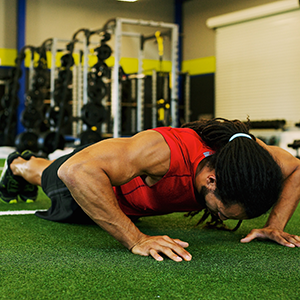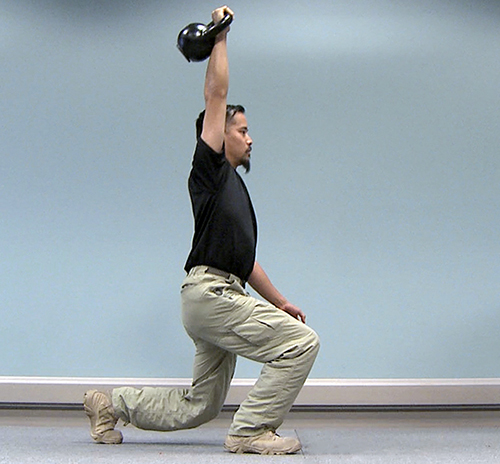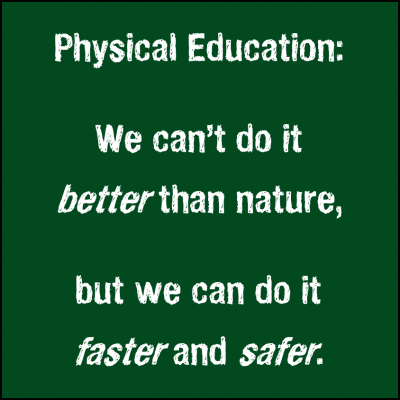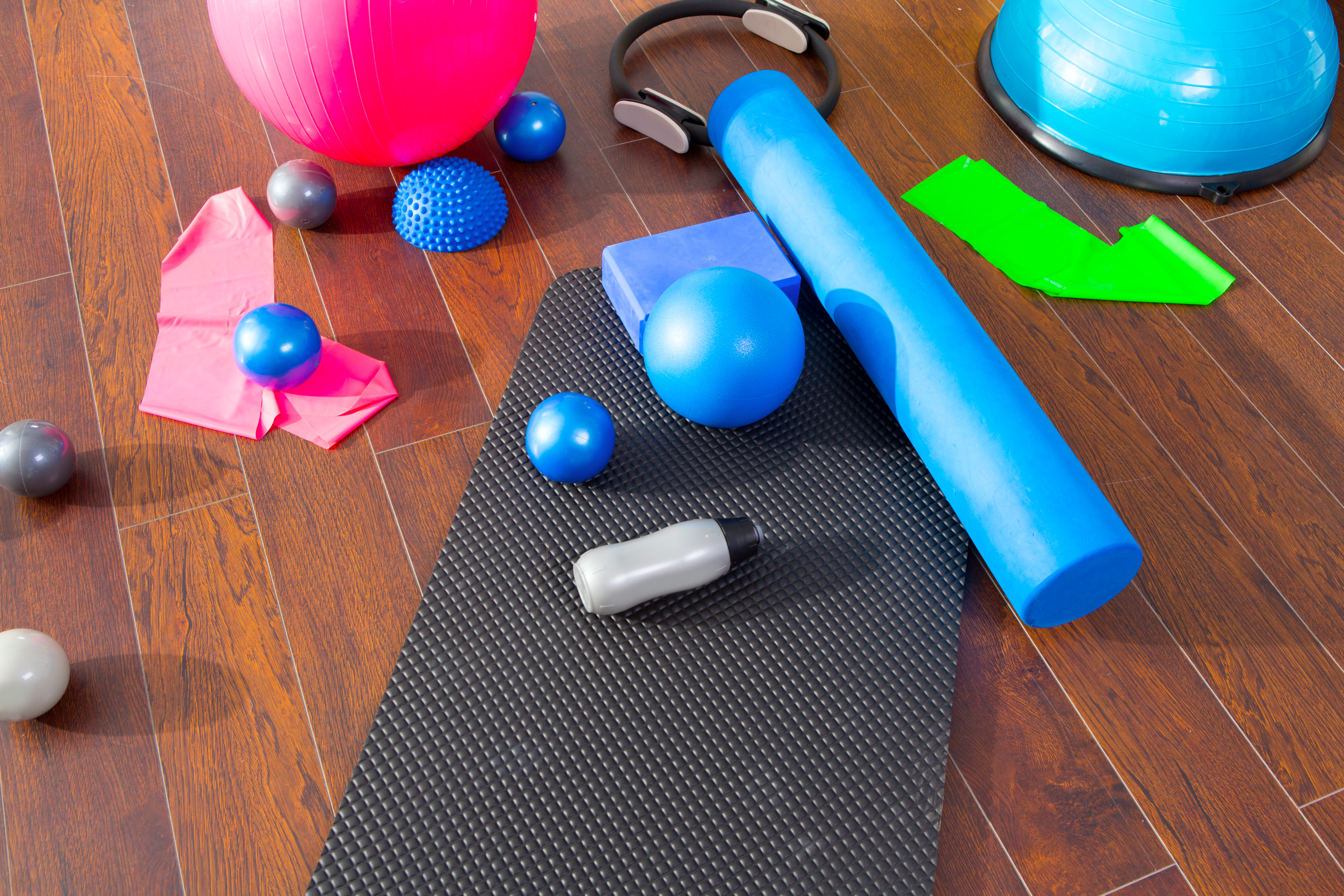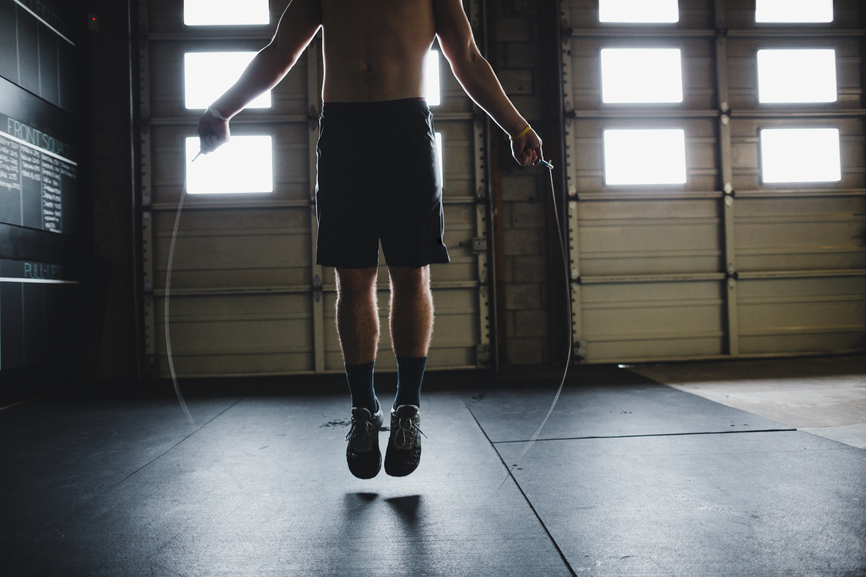What's in a Toe Touch?
Written by Gray Cook FMS Pod Casts
When I entered the Perform Better lecture tour a long time ago, I thought it was very important to discuss movement, because most of the questions concerned exercise and exercise progressions without first qualifying what the exercise was supposed to change in movement. We talked about exercise in the way of muscle development, sort of a kinesiological map, if you will. But we didn’t discuss the way movement patterns are affected by a particular exercise. We failed to realize that right when we finish an exercise, there’s a window of opportunity where hopefully the brain has become more efficient.
Furthermore, the first part of strength gains is initially attributed to neural factors. This means when we introduce a new exercise there’s not a lot of tissue change, but rather a more efficient nervous system. We call this motor control. Motor control is really a fancy term for timing, stabilization and coordination, resulting in a higher level of proficiency.
In almost every movement we do, there’s room for improvement. If you’re an expert at a certain movement, the room for improvement is very small, but if you’re new to a movement or new to doing a movement correctly, there’s a lot of room for improvement. Most of the improvement won’t be muscle bulk or hypertrophy. It might not even be in energy systems, but the reason endurance and strength continue to escalate is because we become more efficient.
On my first pass through the Perform Better lecture circuit, I wanted to demonstrate how movement could change much quicker than we thought. I ended many of my early presentations by finding someone who couldn’t touch his toes, and bringing him on stage. Now obviously, I wouldn’t ask somebody to come on stage if the toe touch limitation was due to pain. I wasn’t trying to perform a rehabilitation trick on stage, and I don’t advise anyone to try this.
However, when people have generalized stiffness and an inability to cleanly touch their toes, we could identify that as movement dysfunction. These are the people I brought on stage to do a few quick techniques.
These techniques don’t involve stretching. They don’t involve putting my hands on anyone. They don’t involve soft tissue mobilization. These are simply exercises to keep the neurological system from putting on the brakes during the toe touch.
Much of the posterior chain tension people feel if they can’t touch their toes is literally putting on the brakes. This is due to a number of reasons.
- The rhythm of the lumbar spine and pelvis could be out of sync—the hips and pelvis should be the first part of flexion, and the spine should be the second part of flexion.
- They may not feel comfortable with the posterior weight shift required as the hips go back and the trunk comes forward.
- They may not be comfortable bending the lumbar spine along with the hips in a rhythmical fashion.
As I started doing the toe touch progression and a few other techniques that improve a toe touch in less than a minute, people started to understand I wasn’t trying to change muscle length or core stability. I was simply giving the brain permission to subconsciously adopt a more efficient pattern.
The brain for some reason compounds a problem by putting fitness on dysfunction. The problem could perhaps be due to a previous injury that wasn’t completely resolved, bad training habits, an imbalance of training such as too much anterior chain musculature training as opposed to posterior, or the lack of full range of motion training, among many possibilities. All of these can reduce one’s natural ability to touch the toes.
Many of the people we’re training don’t have adequate movement. Corrective strategy can be a painless process that doesn’t take a lot of time to do if done correctly. As people started doing the toe touch, it made a good platform for the Functional Movement Screen.
Unfortunately, this is when things spun out of control. People put way too much emphasis on the volume of corrective exercise, and not nearly enough emphasis on the quality.
My point was the opposite. I had changed a person’s toe touch in a matter of minutes. On this better toe touch, I planned to do programming that hopefully would not reduce the toe touch, which I could verify by rechecking the baseline. I wanted the programming cause the person to work within the new range of motion to require more stability.
As I said, things spun out of control and mistakes were made.
First, people became obsessed with corrective strategy and forgot that the purpose of corrective strategy is to get back to performance and fitness training to ultimately make us healthier and more resilient. This allows us to combat our sedentary lifestyle and gives us an outlet for much of the tension we store in our bodies.
Corrective strategy, when practiced by an expert, is a temporary sidetrack, not a six-month program. This is not to say some people are not so dysfunctional or so involved that they won’t need continued corrective strategy, but hopefully, we’ll know exactly what’s driving that.
Maybe we’ll have the consultation of a physician, physical therapist, chiropractor or some other medical professional who can help navigate when people have a permanent restriction or disability. For these people, it’s okay to have continued corrective strategy as part of a program. Otherwise, it would probably be more appropriate to introduce a corrective strategy that works, and then become aggressive in trying to remove and replace it with more functional programming.
Another misconception is that the toe touch was inherently hazardous. We’re not supposed to round our backs; spine flexion is bad, or so the thinking is. I don’t even know where to start with this.
Spine flexion is not bad. Spine flexion under load is bad. We flex our spines all the time. A pitcher flexes his spine in his follow-through movement. A pole vaulter rounds and extends the spine going over the bar. Sprinters flex their spines in the start. Jockeys and cyclists flex their spines to assume an aerodynamic position.
But when we’re lifting, pushing and pulling heavy loads or doing ballistic or plyometric activities, it’s better to adopt a stable spine. We do this not through stiffness, but by vigilant motor control, or what we can call reflex stabilization.
Reflex stabilization doesn’t mean the loaded back is stuck in a stiff and extended position, diligently prepared at all times to do a squat. The best spines move when they need to move and are stable when they need to be stable, thereby demonstrating the highest level of motor control: adaptability.
Then people started reciting a rule that has been somewhat misconstrued, ‘Aren’t we supposed to have stability before mobility?’
The answer is an emphatic no. That breaks all natural laws. We’re supposed to have mobility before stability. We’re supposed to have stability before we have movement.
What they should be saying is we should have stability before movement, but somewhere along the line, ‘movement’ was replaced by ‘mobility.’
Mobility is simply the available motion within normal limits, the potential to move, and the lack of restriction. Once we have a lack of restriction and have the ability to stabilize, we naturally adopt the ability to control motion. Once we can control motion, we should then seek opportunities to move.
The rule is this—Mobility before stability; stability before movement; and movement before strength.
This is why the Functional Movement Screen is not a performance measure. It has some testing that exploits symmetrical mobility—active straight leg raise and shoulder mobility—some testing that exploits low-level motor control and stability—rotary stability—and some testing that exploits high-level motor control and stability—trunk stability pushup, long before going to standing to look at closed-chain movement, which is the inline lunge, hurdle step and overhead squat.
Note how we look at the leg raise, shoulder mobility, rotary stability and the pushup before we worry about lunging, stepping or squatting.
The rule is embedded in the Functional Movement Screen. If it’s not clearly understood, I will own that mistake and issue the statement in clearer terms.
What does Gray mean when he says, “If you can’t touch your toes, don’t deadlift”?
Now, let’s see if we can apply this lesson.
I often work with athletes and patients who have a history of low back pain. They’re commonly given ubiquitous trunk stabilization exercises without anyone exploring their potential for movement. Without mobility, how can we check stability? What we could be checking is stiffness. If we ask you to hold a position and you’re stuck there, are you really holding the position or are you just hanging out on stiffness? Perhaps there is inappropriate tone of stabilizing muscles creating stiffness?
When I evaluate an individual, the basic mobility patterns I look at is a leg raise and a toe touch. If the leg raise is normal, but toe touching is abnormal, there must be something happening when standing that doesn’t allow movement through the full range of motion. When restricted in both movements, there must be a restriction regardless of whether loaded or not.
Either way, it’s extremely important to normalize the toe touch before teaching a hip hinge, deadlift, swing or squat.
A hip hinge ultimately spares the spine and loads the hips so the hips do most of the dynamic work. The spine statically, without movement, transmits the energy to the upper body. The spine can only be stable if the hips are mobile. If the hips are not mobile, the spine cannot be stable.
However, there’s another ingredient. The spine must also be mobile so it can feel and adjust when it’s out of position.
As we enhance the mobility of body segments, one of the first things we do is enhance the proprioception of the area. The deep multifidus muscles that travel along the entire spine have a significant number of muscle spindles, which allow them to be excellent sensory organs since they’re close to the joint. By being close to the joint, they transmit information about subtle changes in the spine to the brain that can then be acted upon by the larger muscles with the larger lever arms, such as the obliques and spinal erectors.
What I usually see with these patients is a lack of toe touch because the spine and hips are too stiff to move. Yet if I put the same patients in a position to deadlift even a small amount of weight, the initial movement is to round the back. They would rather round the spine than load the hips because it’s been so long since they properly loaded the hips. It is an option that’s not available, and sadly they have limited awareness of that option.
Conversely, some people are unwilling to round the back in a toe touch. Yet they are more than willing to allow rounding of the back and poor loading of the hips in a deadlift. They round the spine when they shouldn’t, and consciously or unconsciously hold the back stiff when they try to touch their toes.
What we try to do is flip the scenario by giving them permission to bend, rotate, turn and flex the spine when moving through space. This allows the spine to have more input and more sensory information. The movement stimulates mechanoreceptor activity.
Mechanoreceptor activity then becomes more and more aware of the external environment and the loads, so we create a toe touch to create spine mobility. Then we coach spine stability and allow it to naturally occur in movements like the deadlift.
The biggest misconception is that I give people permission to round the spine under load. Once again, there’s a part of the population who would rather embrace absolutes than think on their own.
Rounding the spine in a toe touch is okay. Rounding the spine in a deadlift is a recipe for disaster. Not rounding the spine in a toe touch is a demonstration of significant dysfunction, because normal weight shifting, body mechanics and alignment have been distorted.
In addressing this, we reset the toe touch to create a better environment to teach the deadlift.
Before you make a decision on how you feel about this, I want you to realize this is only my opinion. However, my opinion is based on over 20 years of working with this very situation. I’m not asking you to invest 20 years playing with this, but at least investigate the scenario.
Don’t find a person with back pain. Find somebody who can’t show you a clean toe touch, and teach the proper deadlifting mechanics and watch what happens. Then do what you can do to help the person achieve a toe touch.
If you don’t know how to do this, we have plenty of ideas. The best place to start is a Functional Movement Screen, because there may be multiple reasons why a person can’t do a toe touch. Visit the exercise library on functionalmovement.com to learn our suggestions for most of those reasons.
Either way, try to teach someone how to deadlift without first clearing the toe touch. Then teach someone to deadlift by clearing the toe touch first. Pull some repetitions before you comment. I think you’ll be surprised.
Related Resources
-
Don't Give Up and Don't Get Hurt
Posted by Gray Cook
-
What Makes CrossFit So Special?
Posted by Gray Cook
Please login to leave a comment
2 Comments
-

Francisco Jose 4/3/2013 3:55:47 PM
Excellent article! Very clear and helpful. We work with rugby players and it's the lack of mobility is very common in them, but all the guys want to lift heavy loads.
paco -

Luke Angel, PT, DPT 4/3/2013 3:57:11 PM
I treat a lot of Crossfit athletes and see this all the time. Some will have a DN on forward flexion and then later in the exam I ask to see a deadlift and a KB swing. (Which most of them have performed thousands of repetitions of these movements.) These athletes attempt to muscle through these movements using spinal flexion and Quadriceps activation, not the hip hinge. Attempting to teach the deadlift properly prior to clearing the toe touch takes a lot of effort and always falls apart when they attempt any significant load. The brain just reverts back to old habits. Clearing the toe touch first seems to train the brain to be able learn the correct deadlift movement even when loaded.

